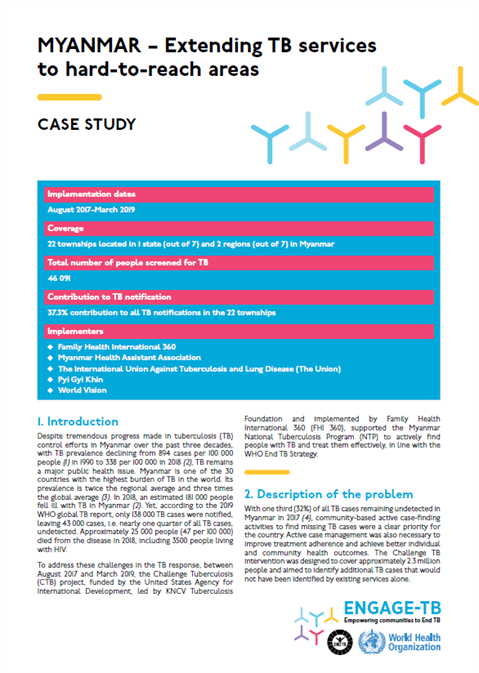Myanmar – Extending TB services to hard-to-reach areas
Case study

Overview
Despite tremendous progress made in tuberculosis (TB) control efforts in Myanmar over the past three decades, with TB prevalence declining from 894 cases per 100 000 people in 1990 to 338 per 100 000 in 2018, TB remains a major public health issue. Myanmar is one of the 30 countries with the highest burden of TB in the world. Its prevalence is twice the regional average and three times the global average. In 2018, an estimated 181 000 people fell ill with TB in Myanmar. Yet, according to the 2019 WHO global TB report, only 138 000 TB cases were notified, leaving 43 000 cases, i.e. nearly one quarter of all TB cases, undetected. Approximately 25 000 people (47 per 100 000) died from the disease in 2018, including 3500 people living with HIV.
To address these challenges in the TB response, between August 2017 and March 2019, the Challenge Tuberculosis (CTB) project, funded by the United States Agency for International Development, led by KNCV Tuberculosis Foundation and implemented by Family Health International 360 (FHI 360), supported the Myanmar National Tuberculosis Program (NTP) to actively find people with TB and treat them effectively, in line with the WHO End TB Strategy.
